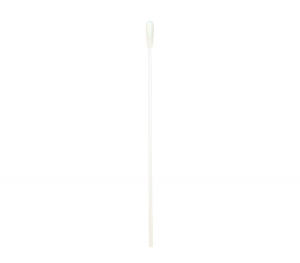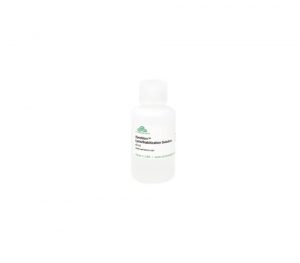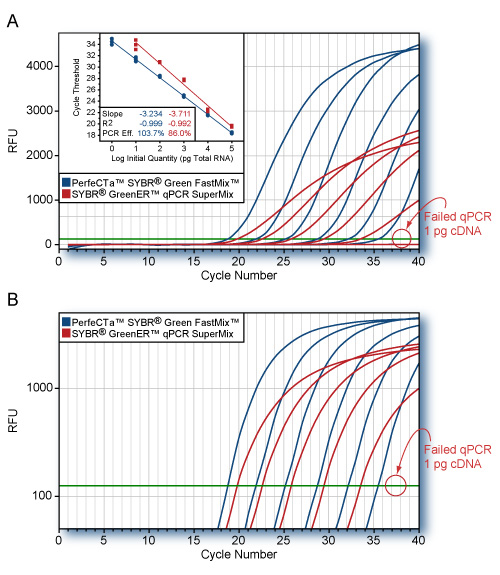AccuStart II PCR ToughMix
| Products | Kit Size | Order Info |
|---|---|---|
| AccuStart II PCR ToughMix | 100 x 25 µL rxns (1 x 1.25 mL) | Order (95142-100) |
| 800 x 25μL rxns (8 x 1.25 mL) | Order (95142-800) | |
| 4000 x 25 μL rxns (1 x 50 mL) | Order (95142-04K) |
Documents
Description
Robust, reliable PCR assay performance with challenging sample materials or impure templates
Features & Benefits
- Stabilized 2X PCR SuperMix enables convenient room-temperature setup and is unaffected by repetitive freeze-thaw
- High-yielding, ultrapure modified Taq DNA polymerase delivers robust, reliable duplex assay performance
- Stringent, ultrapure antibody hotstart ensures sensitive and specific target amplification
- Separate electrophoretic mobility dye reduces risk of post-PCR cross contamination with gel electrophoresis
AccuStart II PCR ToughMix is intended for molecular biology applications. This product is not intended for the diagnosis, prevention or treatment of a disease.
Description
AccuStart II PCR ToughMix is a 2X concentrated ready-to-use reaction cocktail for PCR amplification of DNA templates that overcomes many known inhibitors of PCR often present in crude samples extracted from environmental specimens, plant tissues, or animal tissues. The only user supplied components are DNA template and molecular grade water.
A key component to AccuStart PCR ToughMix is an ultra pure, highly processive thermostable DNA polymerase that is combined with high avidity monoclonal antibodies. These antibodies bind the polymerase and keep it inactive prior to the initial PCR denaturation step. This enables specific and efficient primer extension with the convenience of room temperature reaction assembly. Similar to Taq DNA polymerase, the activated polymerase in AccuStart II PCR ToughMix possesses 5′>3′ DNA polymerase activity and a double-strand specific 5′>3′ exonuclease. The polymerase does not have 3′-exonuclease activity and is free of any contaminating endo or exonuclease activities. PCR products generally contain non-templated dA additions and can be cloned using vectors that have a single 3′-overhanging thymine residue on each end.
GelTrack Loading Dye is a mixture of blue and yellow electrophoresis-tracking dyes that migrate at approximately 4kb and 50 bp. This optional component simplifies post-PCR analysis with gel electrophoresis and eliminates potential for cross contamination by enabling direct transfer of PCR products to the gel sample wells.
Store components in a constant temperature freezer at -25°C to -15°C protected from light upon receipt. Repeated freezing and thawing does not impair product performance. For lot specific expiry date, refer to package label, Certificate of Analysis or Product Specification Form.
Product Flyers
Product Manuals
Publications
Charles Hawkins, Scientific Reports – 2016
ABSTRACT
Fragaria vesca is a species of diploid strawberry being developed as a model for the octoploid garden strawberry. This work sequenced and compared the genomes of three F. vesca accessions: ‘Hawaii 4′, ‘Rügen’, and ‘Yellow Wonder’. Genome-scale analyses of shared and distinct SNPs among these three accessions have revealed that ‘Rügen’ and ‘Yellow Wonder’ are more similar to each other than they are to ‘Hawaii 4’. Though all three accessions are inbred seven generations, each accession still possesses extensive heterozygosity, highlighting the inherent differences between individual plants even of the same accession. The identification of the impact of each SNP as well as the large number of Indel markers provides a foundation for locating candidate mutations underlying phenotypic variations among these F. vesca accessions and for mapping new mutations generated through forward genetics screens. Through systematic analysis of SNP variants affecting genes in anthocyanin biosynthesis and regulation, a candidate SNP in FveMYB10 was identified and then functionally confirmed to be responsible for the yellow color fruits made by many F. vesca accessions. As a whole, this study provides further resources for F. vesca and establishes a foundation for linking traits of economic importance to specific genes and variants.
Hidden diversity: parasites of stream arthropods
Daniel S. Grabner, Freshwater Biology – 2016
ABSTRACT
* Parasite communities of aquatic macroinvertebrates have so far rarely been studied, even if these host organisms are of high relevance for the ecology of freshwater systems and their parasites likely affect the host populations and communities. Therefore, this study addresses this ‘hidden diversity’ in aquatic arthropods of a stream ecosystem in North Rhine-Westphalia, Germany. * Samples of benthic organisms were taken, and the most abundant host species of major invertebrate groups (amphipods and larvae of chironomids, beetles, caddisflies, mayflies, stoneflies) were tested by PCR for different parasite taxa [microsporidians, acanthocephalans (only amphipods), trematodes, nematodes]. Furthermore, the possible link between prevalence and host feeding type was investigated for each parasite group using a newly developed ‘feeding type score’. * In total, 10 species of aquatic insect larvae and two amphipods of the genus Gammarus spp. were tested and 16 different isolates of microsporidians, three acanthocephalan species, six species of trematodes and one nematode were found. Microsporidians were present in all host species with prevalences ranging from 20 to 100%. Only one presumably specific host–microsporidian association was found for the mayfly Ephemera danica and three isolates were detected exclusively in amphipods. Three acanthocephalan species were detected in the amphipods with prevalences of up to 5.3%. All tested host species were infected with trematodes (prevalences 25–100%), except the caddisfly Sericostoma sp. Nematodes were detected in five host species with prevalences ranging from 14 to 80%. For several positive samples, no sequencing result could be obtained, especially for trematodes and nematodes, therefore, the actual parasite diversity might be even higher. * Active filter feeding showed the highest feeding type prevalence score for microsporidia and nematodes, and passive filter feeders for trematodes, but these results have to be interpreted cautiously as only one active and one passive filter feeder species each were present in the sample. * The impressive number of 26 parasite species (12 microsporidians and 10 helminths) were detected in 12 host species, mostly with surprisingly high prevalences. These results illustrate the ‘hidden diversity’ in aquatic ecosystems and highlight the importance of parasites for aquatic ecological research and the need for studies on the effects of mixed parasite infections on the host populations and communities.
Comparison of the oral microbiome in mouthwash and whole saliva samples
Xiaozhou Fan, PLOS ONE – 2018
ABSTRACT
Population-based epidemiologic studies can provide important insight regarding the role of the microbiome in human health and disease. Buccal cells samples using commercial mouthwash have been obtained in large prospective cohorts for the purpose of studying human genomic DNA. We aimed to better understand if these mouthwash samples are also a valid resource for the study of the oral microbiome. We collected one saliva sample and one Scope mouthwash sample from 10 healthy subjects. Bacterial 16S rRNA genes from both types of samples were amplified, sequenced, and assigned to bacterial taxa. We comprehensively compared these paired samples for bacterial community composition and individual taxonomic abundance. We found that mouthwash samples yielded similar amount of bacterial DNA as saliva samples (p from Student’s t-test for paired samples = 0.92). Additionally, the paired samples had similar within sample diversity (p from = 0.33 for richness, and p = 0.51 for Shannon index), and clustered as pairs for diversity when analyzed by unsupervised hierarchical cluster analysis. No significant difference was found in the paired samples with respect to the taxonomic abundance of major bacterial phyla, Bacteroidetes, Firmicutes, Proteobacteria, Fusobacteria, and Actinobacteria (FDR adjusted q values from Wilcoxin signed-rank test = 0.15, 0.15, 0.87, 1.00 and 0.15, respectively), and all identified genera, including genus Streptococcus (q = 0.21), Prevotella (q = 0.25), Neisseria (q = 0.37), Veillonella (q = 0.73), Fusobacterium (q = 0.19), and Porphyromonas (q = 0.60). These results show that mouthwash samples perform similarly to saliva samples for analysis of the oral microbiome. Mouthwash samples collected originally for analysis of human DNA are also a resource suitable for human microbiome research.
Jean Mooney, Scientific Reports – 2018
ABSTRACT
While resistance to anticoagulant rodenticides is known to occur in many European populations of Norway rat and house mouse, to-date no data is available on the occurrence in Ireland of such resistance. No genetic evidence for the occurrence of resistance was found in 65 Norway rat samples analysed, indicative of an absence, or low prevalence, of resistance in rats in at least the Eastern region of the island of Ireland. The presence of two of the most commonly found amino acid substitutions Leu128Ser and Tyr139Cys associated with house mouse resistance to anticoagulant rodenticides was confirmed. The occurrence of two such mutations is indicative of the occurrence of resistance to anticoagulant rodenticides in house mice in the Eastern region of the island of Ireland.
Ashlee Anciro, Theoretical and Applied Genetics – 2018
ABSTRACT
Colletotrichum crown rot (CCR) is an important disease of strawberry (Fragaria ×ananassa) throughout the Southeastern US and in subtropical climates around the world, where hot and humid conditions facilitate rapid disease development. Yet no resistance loci have been described to date, as genetic studies have been historically difficult in allo-octoploid (2n = 8x = 56) strawberry. In the present study, we investigate the genetic architecture of resistance to CCR. Four population sets from the University of Florida were inoculated in four different seasons from 2013–2014 to 2016–2017. Two large, multiparental discovery population sets were used for QTL discovery, and two validation sets of cultivars and advanced selections representing the parent pool of the breeding program were also assessed. Subgenome-specific single-nucleotide polymorphism (SNP) markers were mapped, and FlexQTL™ software was utilized to perform a Bayesian, pedigree-based QTL analysis. A quantitative trait locus on linkage group 6B, which we name FaRCg1, accounts for most of the genetic variation for resistance in the discovery sets (26.8–29.8% in 2013–2014 and 17% in 2015–2016). High-throughput marker assays were developed for the most significant SNPs which correlated with the mode of the QTL region. The discovery and characterization of the FaRCg1 locus and the molecular tools developed from it will be utilized to achieve increased genetic gains for resistance.
CofA (PSF)
PSF-95142-04K-Lot#024418
PSF-95142-04K-Lot#024919
PSF-95142-04K-Lot#025419
PSF-95142-04K-Lot#026330
PSF-95142-100-Lot#027047
PSF-95142-800-Lot#027296
PSF-95142-04K-Lot#027608
PSF-95142-100-Lot#027464
PSF-95142-800-Lot#027297
PSF-95142-800-Lot#028182
PSF-95142-100-Lot#028469
PSF-95142-800-Lot#028525
PSF-95142-04K-Lot#028881
PSF-95142-04K-Lot#029494
PSF-95142-100-Lot#029491
PSF-95142-100-Lot#030044
PSF-95142-800-Lot#66139171
PSF-95142-04K-LOT#66141473
PSF-95142-100-LOT#66141474
PSF-95142-800-LOT#66141475
PSF-95142-800-LOT#66146525
PSF-95142-800-LOT#66147801
PSF-95142-100-LOT#66153252
PSF-95142-100-LOT#66154585
PSF-CM0147-05K-LOT#66154406
PSF-95142-04K-LOT#66155425
PSF-95142-04K-LOT#66157390









